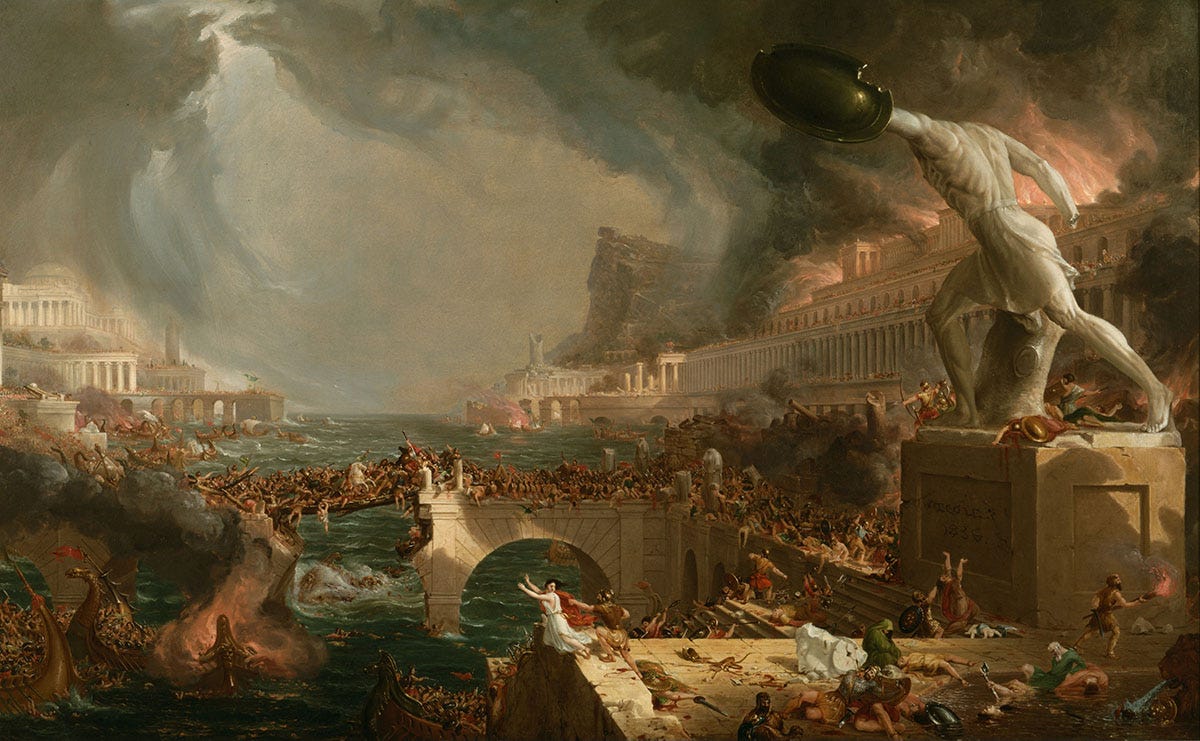This is Andrew Benedict-Nelson, social change strategist and innovation educator. Each week, I share a question that you and your organization can use to find a new perspective on the toughest problems you face. Reply to the e-mail or comment on the site and we can talk about them together!
NOW FOR THIS WEEK’S QUESTION…
Imagine a world where your problem has gotten much, much worse — maybe worse than it has ever been. What are some of the consequences of this disaster? Who suffers in that world, and who thrives? How might someone begin to address the problem after this severe setback?
All the questions I share in this space are designed to help challenge your assumptions about social norms and how to change them. This one does it by blowing up our ideas about what winning and losing look like.
Most of us feel as if we have experienced big victories as well as setbacks in our careers, yet history also shows us that those events often occur within very narrow parameters. We become obsessed with presenting a certain idea before the board or passing a particular piece of legislation, but lose sight of the bigger picture. This exercise puts it back into view. Here’s a step-by-step guide to try it for yourself:
HOW TO DO IT
Name the main problem you or your organization are working on. Of course, you may be working on a dozen different things, but for the purpose of this exercise, pick just one.
Sit down with your team or a group of friends to imagine ways in which the problem could get worse. If the problem can be measured quantitatively, you can pick metrics that are worse than anything you’ve ever seen. Try to imagine qualitative differences too, capturing how the worst-case scenario world might feel. Come to a rough agreement on how you are defining this very bad future outcome.
Now it’s time to imagine some of the specific consequences of the worst-case scenario. What groups beside your own would be most affected? Would other social problems also get worse — or maybe better? Where might efforts to turn around the catastrophe begin? Let your imagination run wild and don’t worry about making a perfect prediction.
Finally, return to the here and now. Review some of the groups, topics, and outcomes you discussed in your future scenario. How did your “future thinking” about them differ from how you think now? Are there groups or ideas you discussed that you don't frequently discuss now? Try to point to at least one aspect of your future scenario that makes you say, “This could matter in the future — let's figure out what it means for us now.”
CAN YOU GIVE ME AN EXAMPLE?
Yup. I once used this exercise with a group whose entire mission was to prevent a specific type of global environmental catastrophe. Their first answer to the question was obvious: the catastrophe occurs, and it’s the end of the world as we know it. Yet as they explored this seemingly dismal world, they discovered a few interesting insights.
First, there were many more degrees of “worst case scenario” than they initially thought — meaning there were opportunities for hope even if things start going in the wrong direction.
Second, by imagining how behaviors might change in such a world, they better understood the attitudes and beliefs of several organizations in the present. This helped them to reimagine their appeal to various groups in society who might not understand the potential catastrophe in the same way they did.
COOL, SO WHAT MAKES THIS WORK?
This question is an example of how to investigate behavior around social problems using the future dynamic. It’s one of six innovation dynamics I help people master to improve their critical thinking and build strategies for social change. Reply to this e-mail with your answer to the question and I’ll let you know what I think! Or go to www.teachingsocialchange.com to learn more.
P.S. - I think this question has some pretty obvious implications for events in the news right now. If you’d like to discuss those instead of the immediate problems you are dealing with, I’d love to hear your thoughts.

